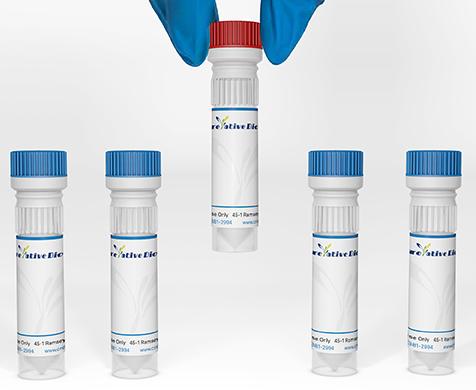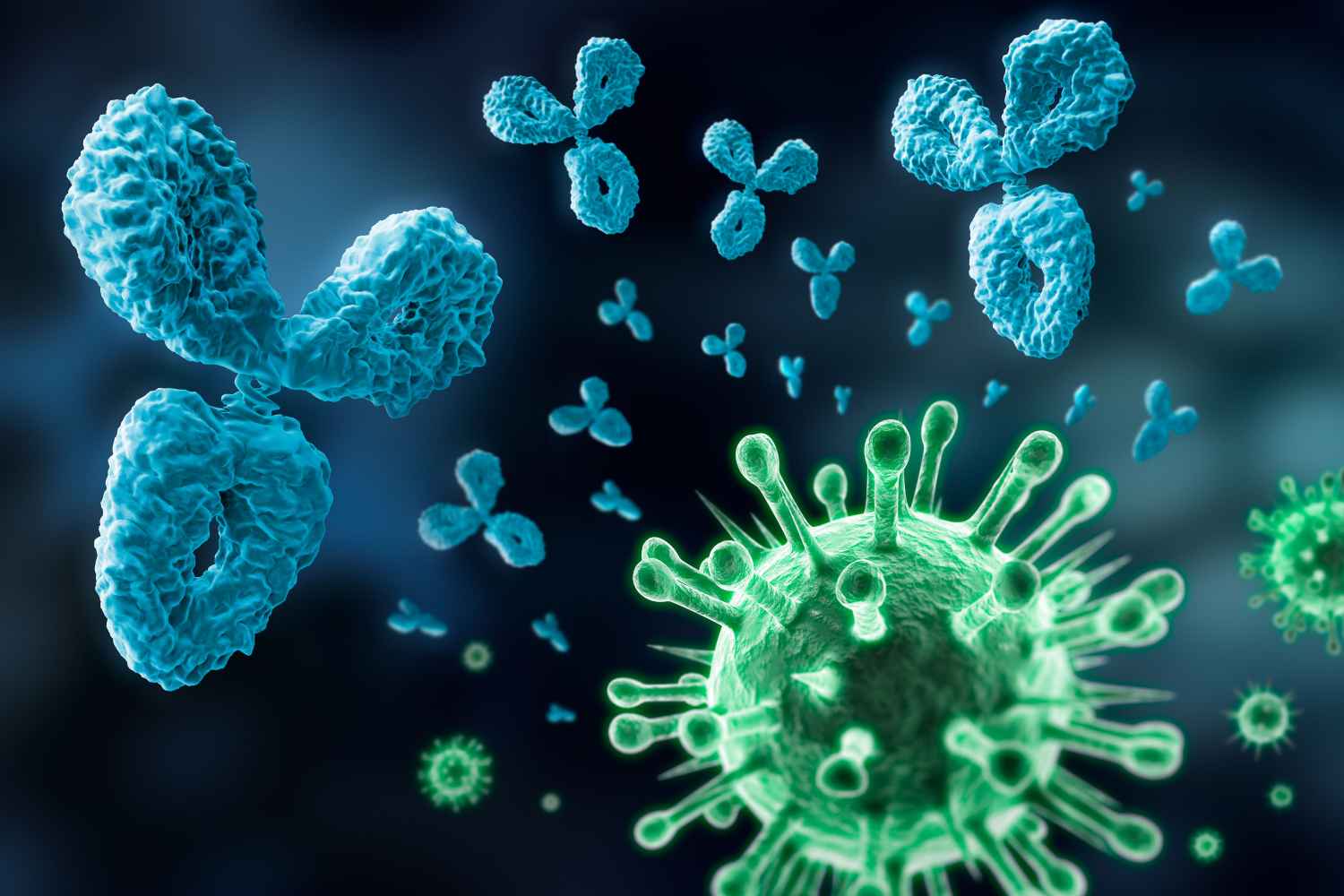AMHR2
This gene encodes the receptor for the anti-Mullerian hormone (AMH) which, in addition to testosterone, results in male sex differentiation. AMH and testosterone are produced in the testes by different cells and have different effects. Testosterone promotes the development of male genitalia while the binding of AMH to the encoded receptor prevents the development of the mullerian ducts into uterus and Fallopian tubes. Mutations in this gene are associated with persistent Mullerian duct syndrome type II. Alternatively spliced transcript variants encoding different isoforms have been identified.
Full Name
ANTI-MULLERIAN HORMONE RECEPTOR TYPE 2
Function
On ligand binding, forms a receptor complex consisting of two type II and two type I transmembrane serine/threonine kinases. Type II receptors phosphorylate and activate type I receptors which autophosphorylate, then bind and activate SMAD transcriptional regulators. Receptor for anti-Muellerian hormone.
Biological Process
Activin receptor signaling pathway Source: GO_Central
Anti-Mullerian hormone signaling pathway Source: UniProtKB
BMP signaling pathway Source: Reactome
Cellular response to growth factor stimulus Source: GO_Central
Female gonad development Source: Ensembl
Male gonad development Source: Ensembl
Mullerian duct regression Source: UniProtKB
Protein phosphorylation Source: GO_Central
Sex differentiation Source: UniProtKB
Transforming growth factor beta receptor signaling pathway Source: GO_Central
Anti-Mullerian hormone signaling pathway Source: UniProtKB
BMP signaling pathway Source: Reactome
Cellular response to growth factor stimulus Source: GO_Central
Female gonad development Source: Ensembl
Male gonad development Source: Ensembl
Mullerian duct regression Source: UniProtKB
Protein phosphorylation Source: GO_Central
Sex differentiation Source: UniProtKB
Transforming growth factor beta receptor signaling pathway Source: GO_Central
Cellular Location
Membrane
Involvement in disease
Persistent Muellerian duct syndrome 2 (PMDS2): A form of male pseudohermaphroditism characterized by a failure of Muellerian duct regression in otherwise normal males.
Topology
Extracellular: 18-149 aa
Helical: 150-170 aa
Cytoplasmic: 171-573 aa
Helical: 150-170 aa
Cytoplasmic: 171-573 aa
View more
Anti-AMHR2 antibodies
+ Filters
 Loading...
Loading...
Target: AMHR2
Host: Mouse
Antibody Isotype: IgG2a
Specificity: Human
Clone: 10H8.1
Application*: WB
Target: AMHR2
Host: Rabbit
Antibody Isotype: IgG
Specificity: Human
Clone: CBYC-A559
Application*: WB
Target: AMHR2
Host: Mouse
Antibody Isotype: IgG1, κ
Specificity: Human
Clone: D9
Application*: WB, IP, IF, E
More Infomation
Hot products 
-
Mouse Anti-dsRNA Recombinant Antibody (2) (CBMAB-D1807-YC)

-
Mouse Anti-AKT1 Recombinant Antibody (V2-180546) (CBMAB-A2070-YC)

-
Rat Anti-CD300A Recombinant Antibody (172224) (CBMAB-C0423-LY)

-
Mouse Anti-ACKR3 Recombinant Antibody (V2-261265) (CBMAB-C1023-LY)

-
Mouse Anti-CD2AP Recombinant Antibody (BR083) (CBMAB-BR083LY)

-
Mouse Anti-AP4E1 Recombinant Antibody (32) (CBMAB-A2996-YC)

-
Mouse Anti-ADAM29 Recombinant Antibody (V2-179787) (CBMAB-A1149-YC)

-
Mouse Anti-ATP5F1A Recombinant Antibody (51) (CBMAB-A4043-YC)

-
Mouse Anti-ACVR1C Recombinant Antibody (V2-179685) (CBMAB-A1041-YC)

-
Mouse Anti-BAD (Phospho-Ser136) Recombinant Antibody (CBYY-0138) (CBMAB-0139-YY)

-
Mouse Anti-DMPK Recombinant Antibody (CBYCD-324) (CBMAB-D1200-YC)

-
Rabbit Anti-ALDOA Recombinant Antibody (D73H4) (CBMAB-A2314-YC)

-
Mouse Anti-CDKL5 Recombinant Antibody (CBFYC-1629) (CBMAB-C1689-FY)

-
Mouse Anti-BACE1 Recombinant Antibody (61-3E7) (CBMAB-1183-CN)

-
Mouse Anti-ATG5 Recombinant Antibody (9H197) (CBMAB-A3945-YC)

-
Rabbit Anti-DLK1 Recombinant Antibody (9D8) (CBMAB-D1061-YC)

-
Mouse Anti-CASP7 Recombinant Antibody (10-01-62) (CBMAB-C2005-LY)

-
Mouse Anti-Acetyl SMC3 (K105/K106) Recombinant Antibody (V2-634053) (CBMAB-AP052LY)

-
Mouse Anti-CTCF Recombinant Antibody (CBFYC-2371) (CBMAB-C2443-FY)

-
Mouse Anti-AHCYL1 Recombinant Antibody (V2-180270) (CBMAB-A1703-YC)

For Research Use Only. Not For Clinical Use.
(P): Predicted
* Abbreviations
- AActivation
- AGAgonist
- APApoptosis
- BBlocking
- BABioassay
- BIBioimaging
- CImmunohistochemistry-Frozen Sections
- CIChromatin Immunoprecipitation
- CTCytotoxicity
- CSCostimulation
- DDepletion
- DBDot Blot
- EELISA
- ECELISA(Cap)
- EDELISA(Det)
- ESELISpot
- EMElectron Microscopy
- FFlow Cytometry
- FNFunction Assay
- GSGel Supershift
- IInhibition
- IAEnzyme Immunoassay
- ICImmunocytochemistry
- IDImmunodiffusion
- IEImmunoelectrophoresis
- IFImmunofluorescence
- IGImmunochromatography
- IHImmunohistochemistry
- IMImmunomicroscopy
- IOImmunoassay
- IPImmunoprecipitation
- ISIntracellular Staining for Flow Cytometry
- LALuminex Assay
- LFLateral Flow Immunoassay
- MMicroarray
- MCMass Cytometry/CyTOF
- MDMeDIP
- MSElectrophoretic Mobility Shift Assay
- NNeutralization
- PImmunohistologyp-Paraffin Sections
- PAPeptide Array
- PEPeptide ELISA
- PLProximity Ligation Assay
- RRadioimmunoassay
- SStimulation
- SESandwich ELISA
- SHIn situ hybridization
- TCTissue Culture
- WBWestern Blot

Online Inquiry







